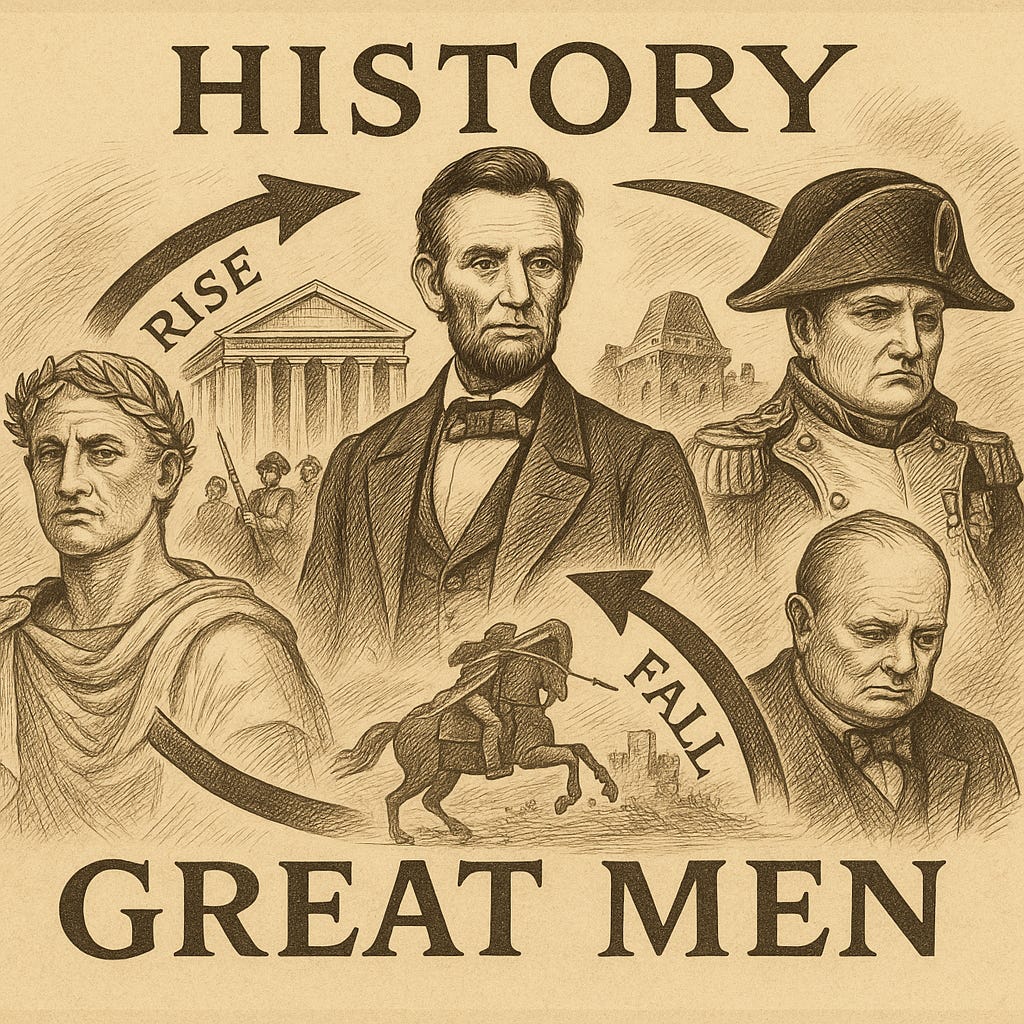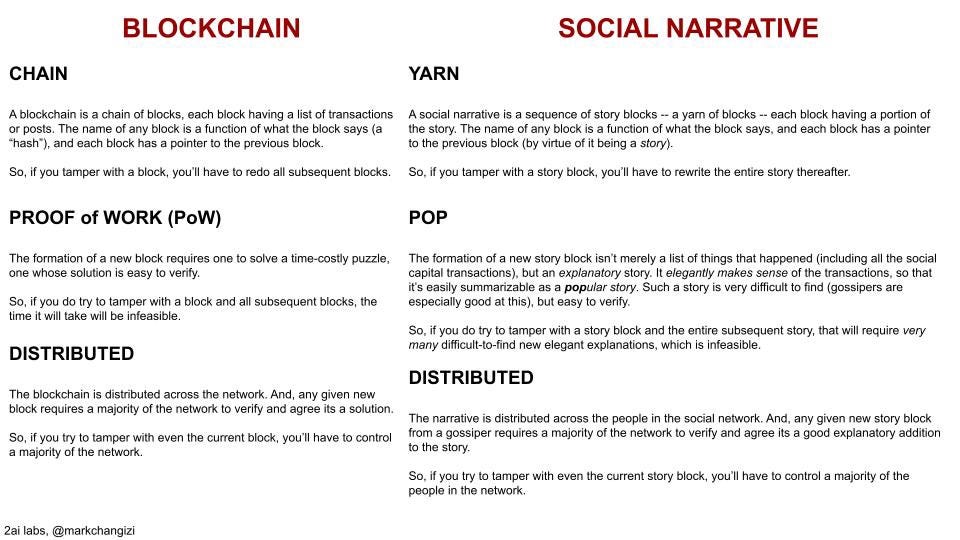Why is History End Up about the Rise and Fall of “Great Men”?
History Is a Blockchain of Reputations
Why do we remember history not as a neutral timeline of events, but as a drama of people—of “great men,” of rises and downfalls, of who won, who lost, who mattered?
Why is our collective memory built less from systems and causes and more from stories of individual ascent and collapse?
It’s not because we’re lazy or unserious thinkers. It’s because social narratives are designed—evolved—to track something else entirely: reputation.
⸻
Narratives as Reputational Ledgers
Years ago, I argued that social narratives function like blockchains—not because they’re technological, but because they serve the same decentralized function of preserving a reliable ledger. In this case, not of currency or tokens, but of social currency: who has status, who lost it, who deserves credit, who deserves blame.
Narratives are our way of syncing social reputations across a population. And just as a blockchain resists tampering with past transactions, narratives resist revision because changing them would alter the reputational balance sheet.
Over time, I’ve come to see this ledger-like function as not just an aspect of narrative—it’s the defining purpose. And this has deep implications for how we record and remember history itself.
⸻
Why History Becomes Biographical
If narrative is fundamentally a reputation-tracking mechanism, then it makes perfect sense that history comes to us not as a list of causes and conditions, but as the rise of Caesar, the fall of Napoleon, the triumph of Lincoln.
This isn’t incidental—it’s structurally necessary. Reputational information must be tied to specific people or groups, because only people have social credit. Only agents can win or lose esteem. So the way history gets stored—culturally, socially, mnemonically—is through personal stories of ascension and collapse.
The “great man” theory of history, for all its flaws, wasn’t a delusion. It was a reflection of the fact that we store historical knowledge in narrative form, and narrative form obeys the logic of the reputational ledger.
Even when we try to write systemic histories—economic, technological, ecological—we can’t help but anchor them around figures. Individuals become narrative vessels through which reputational value flows.
⸻
The History We Keep vs. The History That Happened
This helps explain the persistent gap between what actually happened and what gets remembered.
Many of the most influential causal forces in history—demographics, climate shifts, trade routes, supply chains—leave no reputational footprint. No person rises or falls because of them, at least not directly. So they don’t get recorded in the narrative chain.
They’re not part of the blockchain of reputation.
What gets remembered is what the reputational system needed to remember: who gained esteem, who lost it, and how that balance shifted.
⸻
A Ledger, Not a Library
So when we look at the structure of historical memory, we’re not looking at a neutral archive. We’re looking at a distributed social system for tracking reputational motion—a blockchain that preserves who was up, who was down, and why.
That’s why history is anthropomorphic. That’s why it’s dramatic. That’s why it’s sticky.
Not because that’s how the past was, but because that’s what the narrative system was designed to track.
And unless we understand that, we’ll keep confusing reputational memory with objective memory, and mistaking the story of who mattered for the story of what happened.
The social narratives that shape us. Moment 238
Social narratives have blockchain-like properties, making them difficult to overturn
On May 7, 2020, I discussed on Twitter how, once Covid collective hysteria got going, along with a new narrative, it was going to be very difficult to ever get rid of it.



